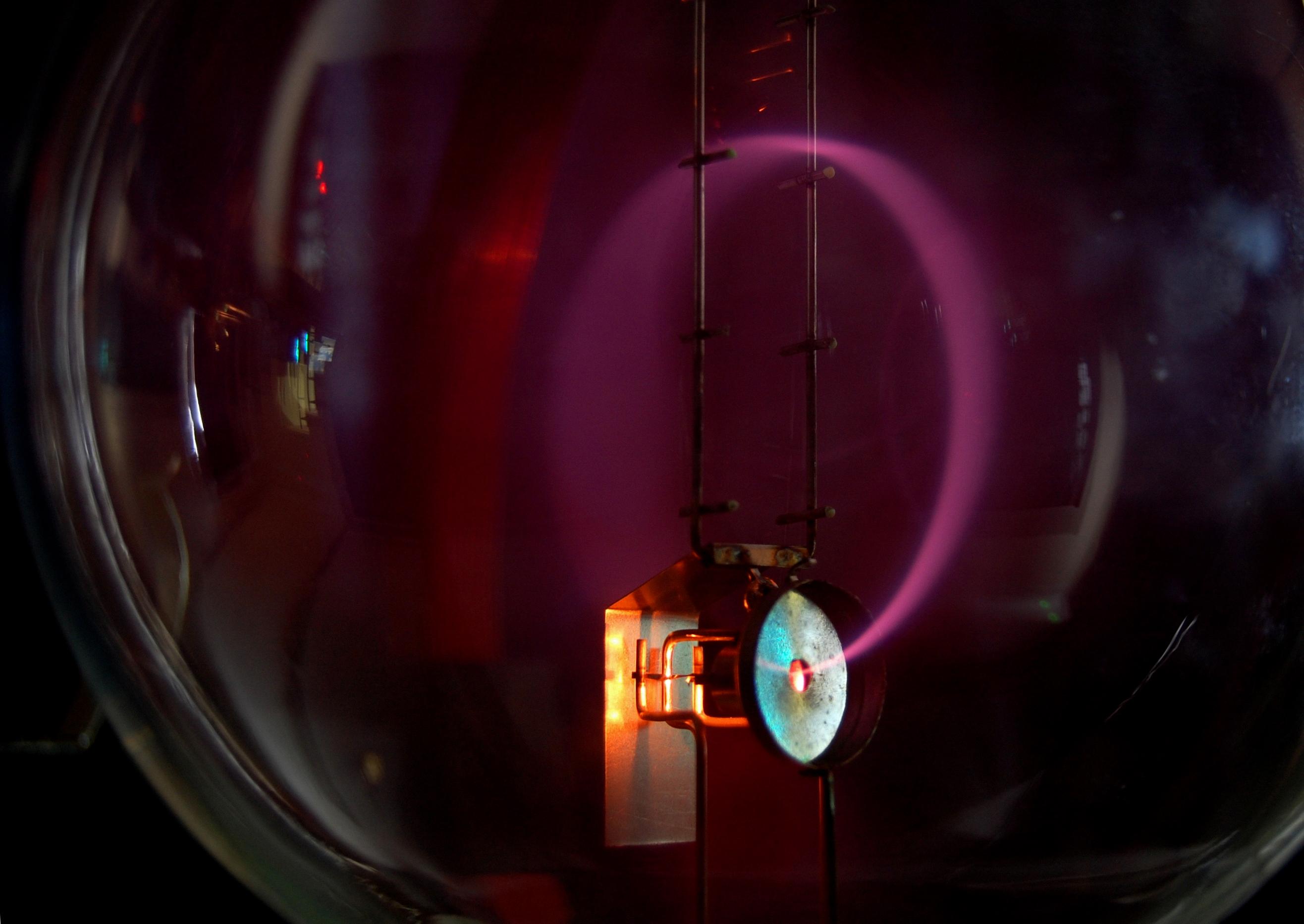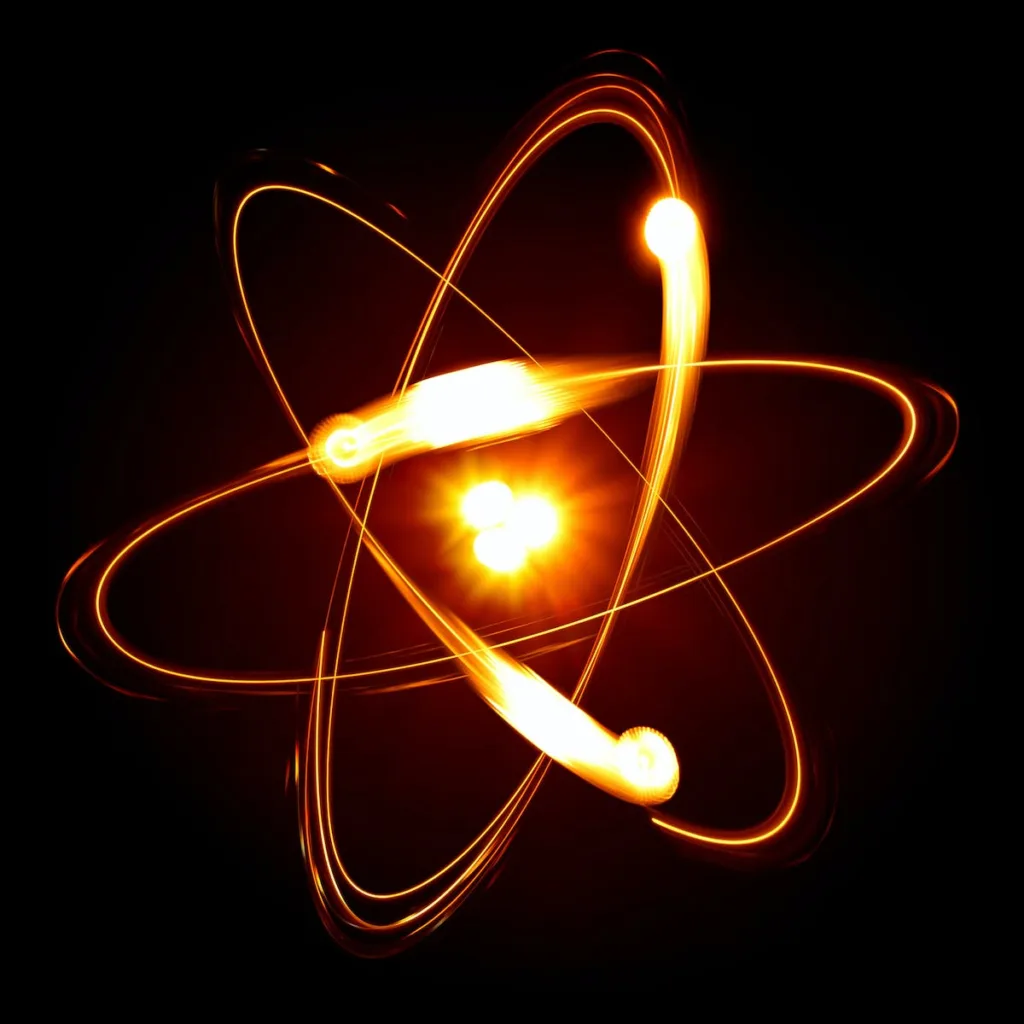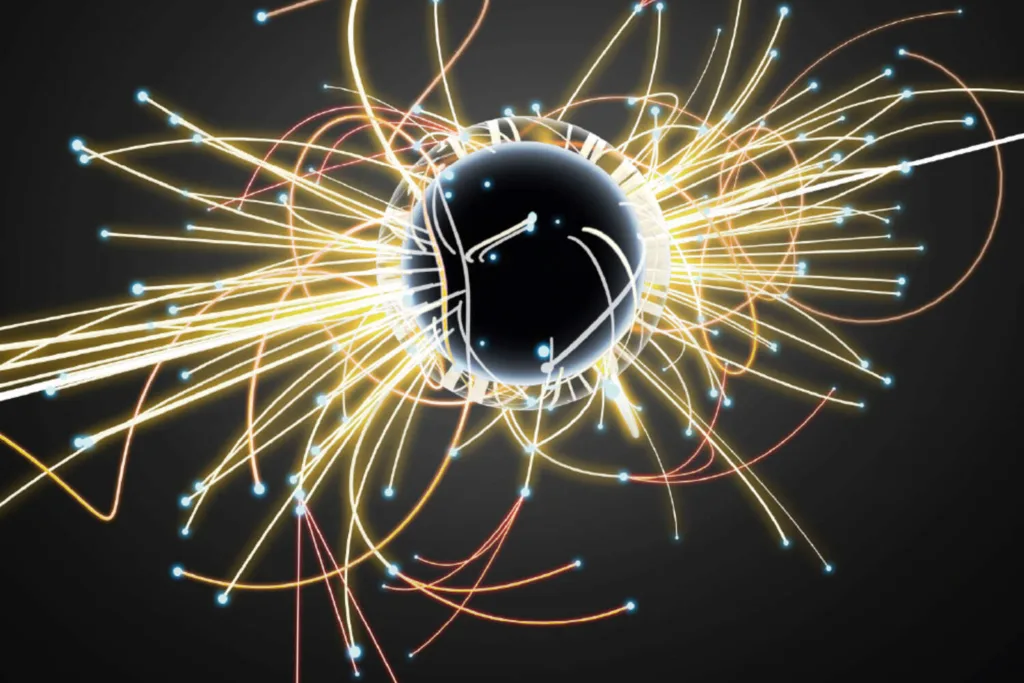Electrons are among the most fundamental particles that make up the universe. They are present in all atoms and are responsible for the chemical and physical properties of matter. But do electrons have mass? The short answer is yes, but let’s dive deeper to understand the nature of this mass.
The mass of an electron is approximately 9.109×10− 31 kilograms, or 5.489×10− 4 atomic mass units. This is an incredibly small value, but it has a significant impact on the behavior of electrons. Due to the mass-energy equivalence principle, this mass corresponds to a rest energy of 0.511 MeV. In oter words, it takes a certain amount of energy to create an electron from nothing, and this energy is directly related to its mass.
The mass of an electron is only about 1/2000 the mass of a proton or neutron, which are the other subatomic particles that make up atoms. This means that electrons contribute virtually nothing to the total mass of an atom. Instead, the mass of an atom is mostly determined by the protons and neutrons in its nucleus.
However, even though electrons have a small mass, they still interact with other particles through the force of gravity. This is because mass and gravity are inherently related. The gravitational force between two electrons is incredibly weak because of their small masses, but it is still present.
The charge of an electron is -1, which is equal but opposite to the charge of a proton, which is +1. This negative charge means that electrons are attracted to positively charged particles and repelled by other negatively charged particles. This behavior is responsible for the way in which electrons interact with other particles in chemical reactions and electrical circuits.
The mass of an electron was first determined by combining two measurements. The mass-to-charge ratio of the electron was estimated by Arthur Schuster in 1890 by measuring the deflection of “cathode rays” due to a known magnetic field in a cathode ray tube. Later, Robert Millikan conducted the famous oil drop experiment in 1909, which allowed him to measure the charge of an electron and its mass separately.
Electrons do have mass, but it is incredibly small compared to other subatomic particles. This mass plays a crucial role in determining the behavior of electrons and their interactions with other particles. Understanding the nature of electron mass is essential for understanding the fundamental properties of matter and the universe as a whole.
Do Electrons Have Mass or Energy?
Electrons possess both mass and energy. The mass of an electron is a fundamental property that remains constant regardless of its energy state. The invariant mass of an electron is approximately 9.109×10− 31 kilograms, or 5.489×10− 4 atomic mass units. On the othr hand, the energy of an electron varies depending on its velocity and position. The energy of an electron can be classified as kinetic energy or potential energy. Kinetic energy is the energy an electron possesses due to its motion, while potential energy is the energy an electron possesses due to its position with respect to an electric field. Due to mass-energy equivalence, the rest energy of an electron is equivalent to its mass, and this corresponds to 0.511 MeV. In summary, electrons have both mass and energy and their energy varies depending on their velocity and position.

Source: en.wikipedia.org
Why Do Electrons Lack Mass?
Electrons actually do have mass, but it is much smaller compared to the mass of a proton or neutron. The reason for this is because electrons are elementary particles, meaning they are not made up of smaller particles. Protons and neutrons, on the other hand, are made up of quarks, which contribute to ther larger mass. Additionally, electrons are not affected by the strong nuclear force, which is responsible for holding protons and neutrons together in the nucleus of an atom. This means that electrons are free to move around the nucleus, and their small mass does not significantly contribute to the overall mass of an atom.
Measuring the Mass of Electrons
Electrons were frst discovered by J.J. Thomson in 1897 during experiments with cathode ray tubes. These tubes consist of a vacuum-sealed glass tube that contains a small amount of gas and two electrodes. When a high voltage is applied to the electrodes, a stream of charged particles, or cathode rays, is produced. Thomson observed that these cathode rays were deflected by electric and magnetic fields, indicating that they must have a charge.
In 1909, Robert Millikan performed his famous oil drop experiment, which determined the charge of the electron. By suspending tiny oil droplets in an electric field, he was able to measure the amount of charge on each droplet and found that the charge was always a multiple of a fundamental unit of charge, which we now know is the charge of the electron.
Knowing the charge of the electron and observing its deflection in a magnetic field, as first done by Arthur Schuster in 1890, allowed scientists to calculate the mass-to-charge ratio of the electron. In 1913, J.J. Thomson and his son George performed experiments that measured the deflection of cathode rays in both electric and magnetic fields. By comparing the two deflections, they were able to determine the mass of the electron.
Today, we know that electrons have mass because they interact with other particles in ways that are consistent with their having mass. For example, electrons can be scattered by atomic nuclei or other charged particles, which is only possible if they have mass. Additionally, the behavior of electrons in materials, such as their ability to conduct electricity, can be explained by their having mass.
The Charge and Mass of an Electron
An electron is both a charge and has mass. Its charge is negative, and it is considered a subatomic particle. The mass of an electron is incredibly low, only about 9.11 x 10^-31 kilograms, making it one of the lightest particles known to science. Despite its small size, the electron is a fundamental building block of matter and plays important roles in chemical reactions and electricity. Therefore, it can be said that an electron is a particle that possesses a negative charge and has a small mass.
Composition of an Electron
An electron is a type of subatomic particle that is found in the atoms of all elements. It is considered to be a fundamental particle, meaning that it is not made up of smaller components. However, electrons do have a property called spin, which is rlated to their internal structure. Electrons are negatively charged particles that orbit the positively charged nucleus of an atom. They are very small, with a mass that is approximately 1/1836th that of a proton. Electrons are thought to be point-like particles, meaning that they have no size or shape. They are held in orbit around the nucleus by the electromagnetic force, which is mediated by photons. Electrons play a crucial role in many chemical reactions and are responsible for the electrical conductivity of materials. They are also involved in the creation and transmission of electromagnetic radiation, which includes visible light, radio waves, and X-rays.

What is Contained Within an Electron?
According to our current understanding of the structure of atoms, there is nothing inside an electron except the electron itself. Electrons are classified as elementary particles, whih means they are not made up of smaller particles. They are believed to be point-like particles with no discernible structure or internal components. In other words, electrons are fundamental building blocks of matter that cannot be broken down into smaller parts. However, electrons do have properties, such as mass, charge, and spin, which are described by the laws of quantum mechanics. The behavior of electrons is also affected by the presence of other particles and forces, such as the electromagnetic force, which governs the interactions between charged particles.
Size of a Quark
Quarks are subatomic particles that are considered as the building blocks of protons and neutrons, which are the basic components of an atom’s nucleus. The size of a quark is incredibly small, about 10^-18 meters, which is much smaller than the size of a proton or neutron, which is around 10^-15 meters. This means that quarks are about a thousand times smaller than protons and neutrons.
It is believed that quarks are made up of even smaller particles called preons, but this theory is still uder investigation and has not been proven yet. The size of a quark is so small that it cannot be directly observed or measured. Instead, scientists study the behavior and interactions of quarks to gain insight into their properties and characteristics. Quarks play a crucial role in the fundamental forces that govern the behavior of matter, making them an essential part of our understanding of the universe.
Can Electrons Have No Mass?
Electrons can be considered as havig a mass, which is a fundamental property that characterizes their behavior in the presence of external forces. However, in some cases, such as in the context of graphene, electrons can effectively behave as if they were massless. This is because in graphene, electrons are confined to a two-dimensional plane and have a unique energy dispersion relationship that is described by a linear dispersion relation, meaning that the energy of the electron varies linearly with its momentum. This linear dispersion relation leads to a vanishing effective mass for the electrons at certain points in the Brillouin zone, which gives rise to a number of unusual and interesting electronic properties. It is important to note, however, that this effective mass is not the same as the rest mass of the electron, which is a well-defined physical quantity that is not zero.
What is the Size of a Photon?
The size of a photon depends on its energy level. A photon with low energy, such as one with an energy level lower than the rest energy of an electron, has a shape like a thin stick. On the other hand, a photon with higher energy, such as one with an energy level higher than the rest energy of an electron, has a shape like a plate.
Additionally, the size of a photon can be compared to the classical radius of an electron. If the photon radius is smaller than the classical radius of an electron, it is considered to be small. For example, a photon with an energy level of 13.6 eV has a radius of 34.9 pm, whih is less than the Bohr radius.
Overall, the size of a photon varies depending on its energy level and can be compared to the size of an electron.

Mass of an Electron
The mass of a single electron is approximately 9.1×10−28 grams. This is an incredibly small amount of mass, as electrons are subatomic particles that make up atoms. To put it into perspective, the mass of a single electron is about 1/1836th the mass of a proton, whih is also a subatomic particle found in the nucleus of an atom. It is important to note that the mass of an electron is often expressed in terms of its equivalent energy, which is given by the famous equation E=mc², where E is energy, m is mass, and c is the speed of light. The mass of an electron is a fundamental property of the universe and plays a critical role in the behavior of atoms and the structure of matter.
Does a Neutron Have Mass?
Yes, a neutron does have mass. In fact, it has a rest mass of approximately 1.6749 × 10^-27 kilograms, which is slightly greater than the rest mass of a proton, another subatomic particle that is also a constituent of atomic nuclei. While it may not have an electric charge, the mass of a neutron is a crucial factor in determining the stability and behavior of atomic nuclei, as well as in many other fields of physics and chemistry.
Does the Photon Have Mass?
The photon is a type of elementary particle that makes up light. One of the key properties of any particle is its mass, and in the case of the photon, we can say with certainty that it is a massless particle. This means that it has no rest mass, whih is the mass that any object has when it’s at rest. According to the theory of special relativity, anything with mass cannot travel at the speed of light, while photons always travel at the speed of light in a vacuum.
Moreover, the photon’s mass is zero, as confirmed by numerous experiments. These experiments have placed extremely tight limits on the mass of the photon, ruling out the possibility that it has any mass within the limits of our current technology. Therefore, we can conclusively state that the photon is a massless particle that only possesses energy and momentum. This is a fundamental aspect of the nature of light and has wide-ranging implications for our understanding of the universe.
Are All Electrons Equally Massive?
Yes, all electrons in the universe have exactly the same mass. According to the Standard Model of particle physics, electrons are elementary particles, which means they are not made up of smaller particles. As such, they are identical in their physical properties, including their mass. The mass of an electron is approximately 9.10938356 × 10^-31 kilograms, which is incredibly small. Despite their small size, electrons are incredibly important in the world around us, playing a vital role in everything from electricity and magnetism to chemical reactions and the behavior of materials.
Do Protons Have Mass?
Yes, protons have mass. In fact, they have a rest mass of 1.67262 × 10− 27 kg, which is approximately 1,836 times the mass of an electron. This means that protons are relatively heavy subatomic particles, which is why they are not easily deflected by electric and magnetic fields. The mass of a proton is an important factor in determining the properties of an atom, as it contributes significantly to the total mass of the nucleus. Without the mass of protons, atoms would be significantly lighter, and the physical and chemical properties of matter would be vastly different.
The Weight of an Electron
The mass of an electron, stated in kilograms, is approximately 10^-30 kilograms, which is an incredibly small value. To put it into perspective, a single grain of sand is estimated to weigh arund 10^-4 kilograms, which is millions of times heavier than an electron. Therefore, in terms of mass, an electron is considered to be extremely light. However, despite its small size, the electron plays a crucial role in nature, being a fundamental particle that is involved in numerous processes, including electricity, chemical reactions, and the formation of atoms and molecules. So while the electron may be physically lightweight, its impact on the natural world is truly heavyweight.
Conclusion
In conclusion, electrons do ideed have mass, albeit very low compared to other subatomic particles. The mass of an electron is approximately 9.109×10− 31 kilograms, which corresponds to a rest energy of 0.511 MeV. While the mass of an electron is negligible compared to that of a proton or neutron, it is still a fundamental property of the particle. Additionally, electrons have a negative electric charge of -1, which plays a crucial role in the behavior and interactions of atoms and molecules. The discovery and understanding of the mass and charge of electrons have led to numerous technological advancements and scientific breakthroughs, such as the development of cathode ray tubes and the invention of electronic devices. Therefore, the knowledge of the properties of electrons is essential in various scientific fields, including physics, chemistry, and engineering.
